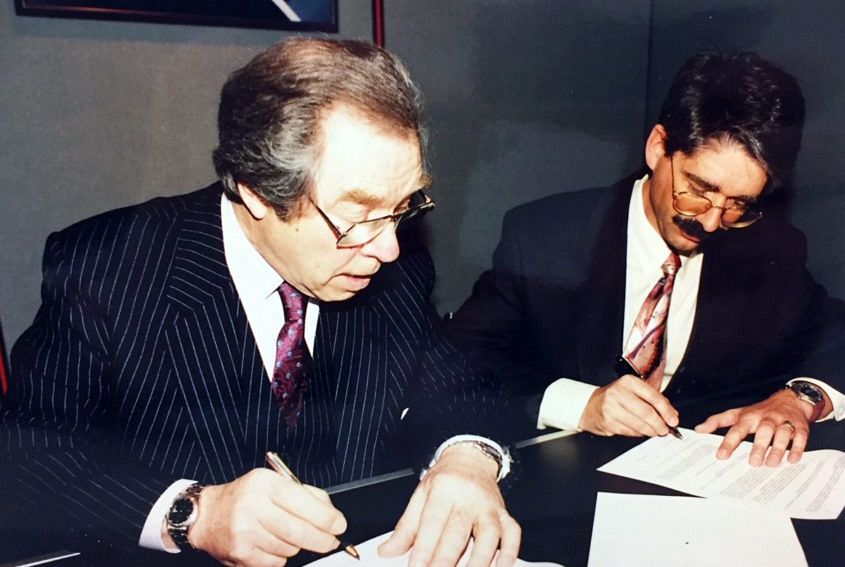 It was a long time between drinks. An epic 200 years. And both beverages were served in Britain. We are talking about the invention of the lever escapement, the ‘beating heart’ of the mechanical watch, by British clockmaker Thomas Mudge around 1775. The only successful alternative, the co-axial escapement, was unveiled nearly two centuries later by another Englishman, George Daniels. While others, including Abraham-Louis Breguet in 1787, made minor modifications to the tech, the story of the escapement is almost exclusively a tale of two Brits – or three, if you include Daniels’ apprentice Roger Smith. The co-axial escapement comprises a system of three pallets that separate the locking function from the impulse. This reduces the sliding friction of the lever escapement and, theoretically, the need for lubrication of the pallets, though in practice some is used to reduce impact corrosion. Twenty-five years later, Smith is a celebrated independent watchmaker in his own right. He explains how a movement that is now wholly associated with Omega, is pictured in this Rolex. Also, importantly, how it has come to be in his possession. T+T: What is the story of this watch? How did it come to have a modified escapement? RS:…
It was a long time between drinks. An epic 200 years. And both beverages were served in Britain. We are talking about the invention of the lever escapement, the ‘beating heart’ of the mechanical watch, by British clockmaker Thomas Mudge around 1775. The only successful alternative, the co-axial escapement, was unveiled nearly two centuries later by another Englishman, George Daniels. While others, including Abraham-Louis Breguet in 1787, made minor modifications to the tech, the story of the escapement is almost exclusively a tale of two Brits – or three, if you include Daniels’ apprentice Roger Smith. The co-axial escapement comprises a system of three pallets that separate the locking function from the impulse. This reduces the sliding friction of the lever escapement and, theoretically, the need for lubrication of the pallets, though in practice some is used to reduce impact corrosion. Twenty-five years later, Smith is a celebrated independent watchmaker in his own right. He explains how a movement that is now wholly associated with Omega, is pictured in this Rolex. Also, importantly, how it has come to be in his possession. T+T: What is the story of this watch? How did it come to have a modified escapement? RS:…
The post INSIGHT: The Great Escapement – Explaining the Rolex with an Omega heart appeared first on Time and Tide Watches.
Continue reading ‘INSIGHT: The Great Escapement – Explaining the Rolex with an Omega heart’
